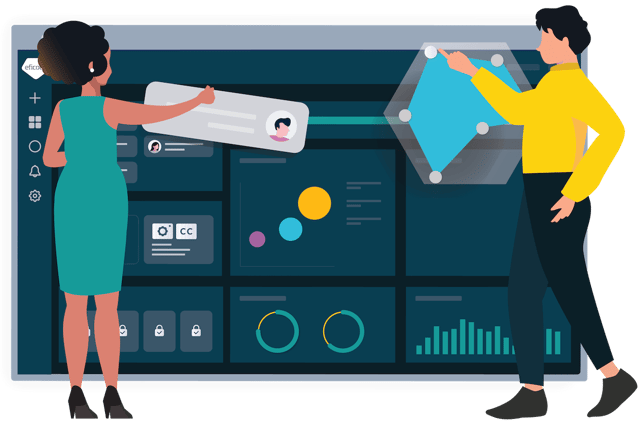Here I discuss what it looks like to be at different stages of your organization’s DevOps transformation, and how Eficode ROOT can help manage the process.
What does an organization at the beginning of their DevOps transformation look like?
Everyone needs to start somewhere with DevOps. Beginner organizations are those that are taking the first critical steps in extending software production agility from the development teams to quality assurance and operations. Typically, the change is driven by an individual or a group of individuals with a personal interest in test automation, automated CI/CD systems, and turning the environment configurations to code.
Often the required tools are, for entirely logical reasons, set up for project-specific uses. They are not installed to serve multiple projects running in parallel, let alone the organization as a whole. Tool selections may depend on personal preferences rather than any objective analysis. Setting up the toolchains takes time, and once the tools are running, often no one in particular is officially responsible for tool maintenance and support.
Fast-track at the beginning of your DevOps transformation
A managed, service-based DevOps platform helps out organizations at the start of their DevOps evolution in multiple ways.
First of all, the reference architecture provides a pre-integrated chain of tools from requirement management to automated deployments. An out-of-the-box platform saves loads of time when it comes to tool selection and figuring out tool-to-tool integrations.
Hence the platform can be installed and taken into use in days instead of weeks (or months).
Once it is up and running, the support services – including consultants with hands-on DevOps implementation expertise – can guide project teams so in-house teams can focus on getting products out quicker and to a higher quality.
By opting for a managed DevOps platform, you set a future-proof tooling baseline right from the start. The platform first serves pioneering teams and then extends to help the whole organization, once the organization is ready for wider DevOps methodology adoption.
What is an organization in DevOps transition?
A typical organization in transition has already chosen DevOps methodology as a guiding principle in their standard mode of operation. However, team-to-team variations in DevOps maturity remain high. Some teams are running a completely automated production line with relatively short production cycles with high throughput, whereas others are only gradually starting to bridge the gaps between development, quality assurance, and operations.
The transition is no longer driven by individuals. Complete teams are changing the way they behave and use modern R&D tooling. Being able to transfer competencies from the more skilled teams to the teams lagging becomes ever more critical as an increasing number of teams shift to the transition phase.
Smooth sailing for transitioning DevOps organizations
A centralized DevOps platform serves the transitioning teams by providing a consistent software assembly line with a low barrier for setting up new projects. As the tools are already being used by other teams, tool usage related expertise is readily available within the organization.
Additionally, on-demand support and DevOps platform consultants will help the teams whenever a need arises. In-house engineers are then free to place all of their focus on the project work which adds value, as the basic platform maintenance and support services do not need their attention.
What is an advanced DevOps organization?
Advanced DevOps organizations use DevOps methodology systematically across the organization. Features flow through the pipeline fast, and the output quality is better than before.
Even though teams can focus on their primary development tasks while running the projects on a managed software assembly line, the overall visibility of a project’s performance and quality may still be lacking. It is often hard to get visibility for the production line as a whole, all the way from requirement management to operating the released software in production.
More visibility and scalability for advanced DevOps organizations
DevOps platforms provide centralized analytics dashboards which are essential for successful continuous improvement. Without visibility of the current project performance, throughput, bottlenecks, and output quality, it is hard or even impossible to locate the areas that require further optimization.
Once the tools are in wide use throughout the organization, whole businesses become highly dependent on their availability, scalability, and performance. Downtime gets more expensive than ever before. A managed platform with proactive maintenance service guarantees that the daily operations related to software development, testing, and operations run on a highly scalable platform without breaks.
Increased transparency for all
On a final note, purchasing platform maintenance, support, and development as a service makes the associated – often hidden – costs clearly visible, bringing them under control, and provides clear cost benefits. Along with having a professionally-managed assembly line, the service users get their share of the overall economies of scale related to running a multitude of customer-specific platforms with a single, scalable team of experts.
Published: Dec 11, 2018
Updated: Mar 30, 2024


